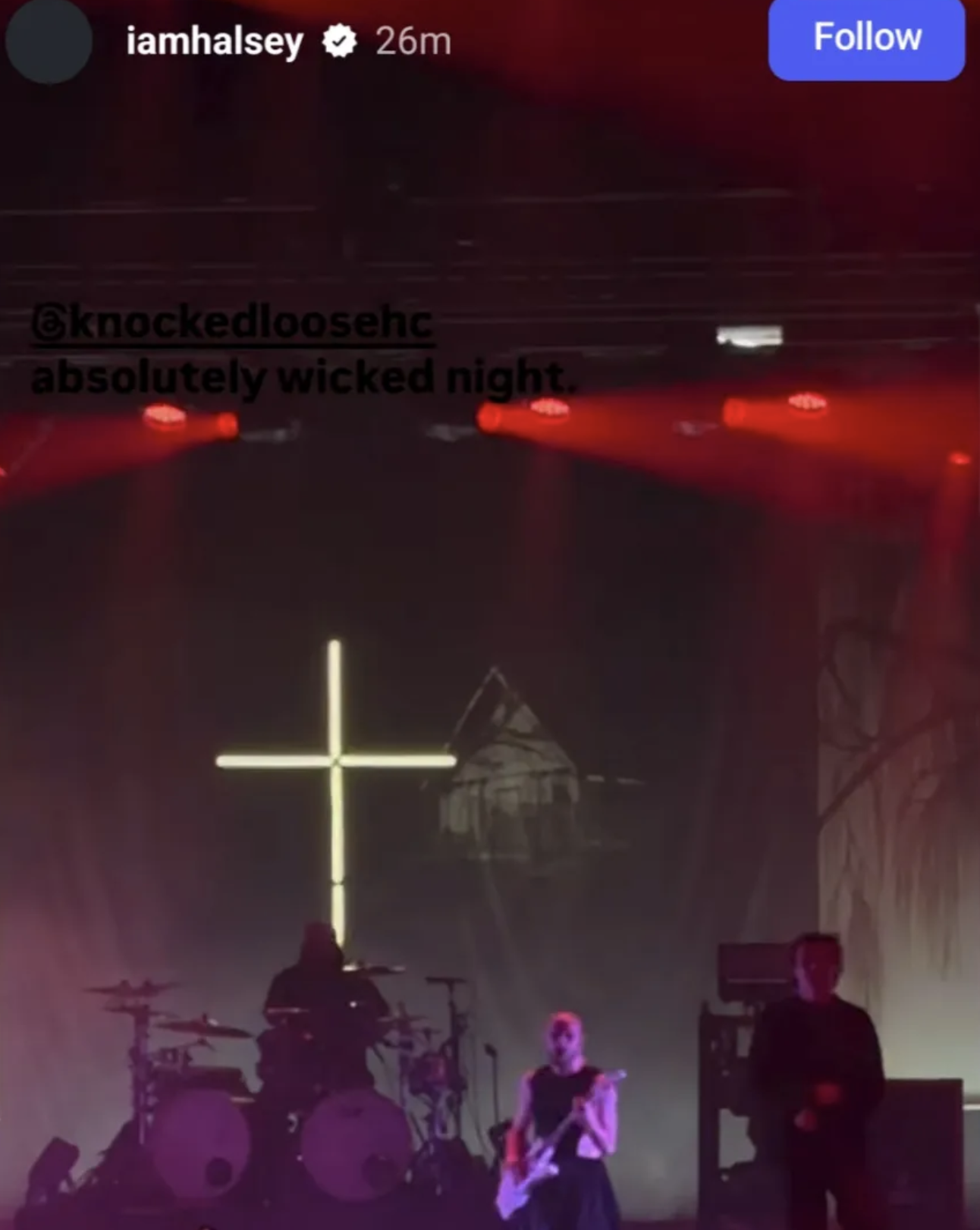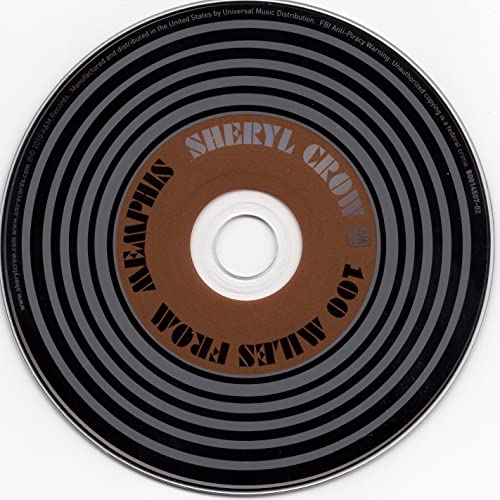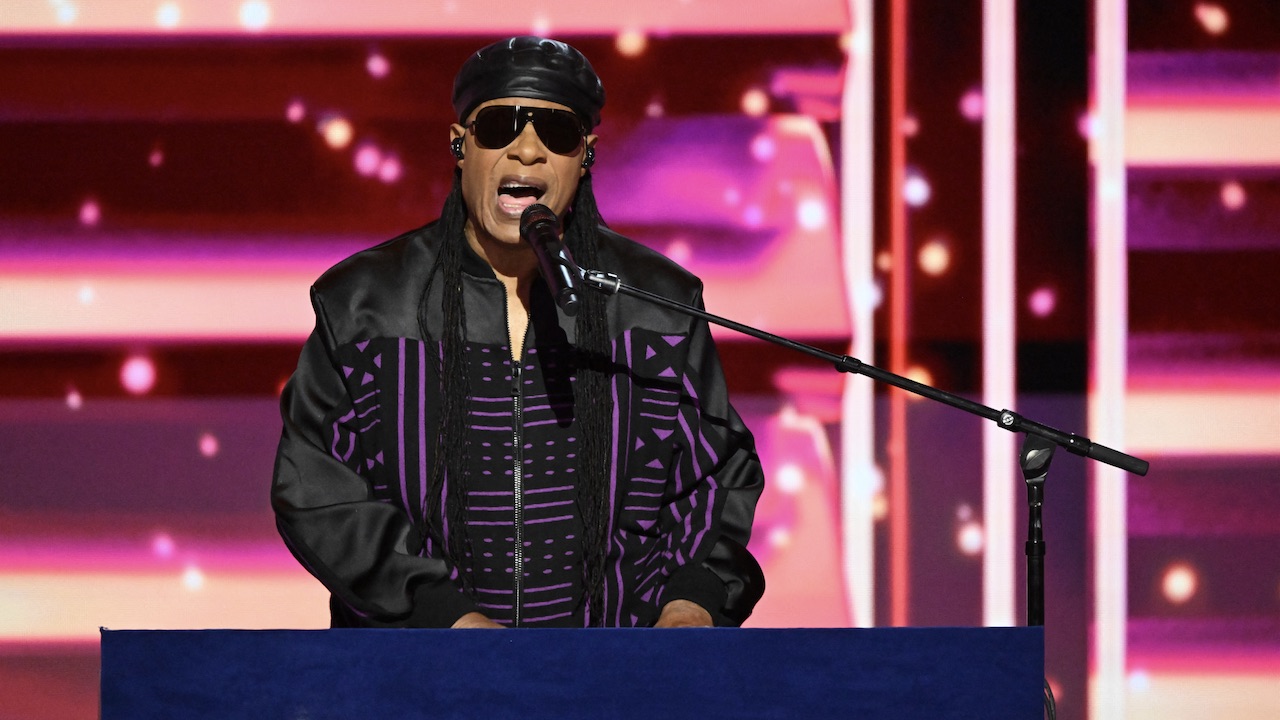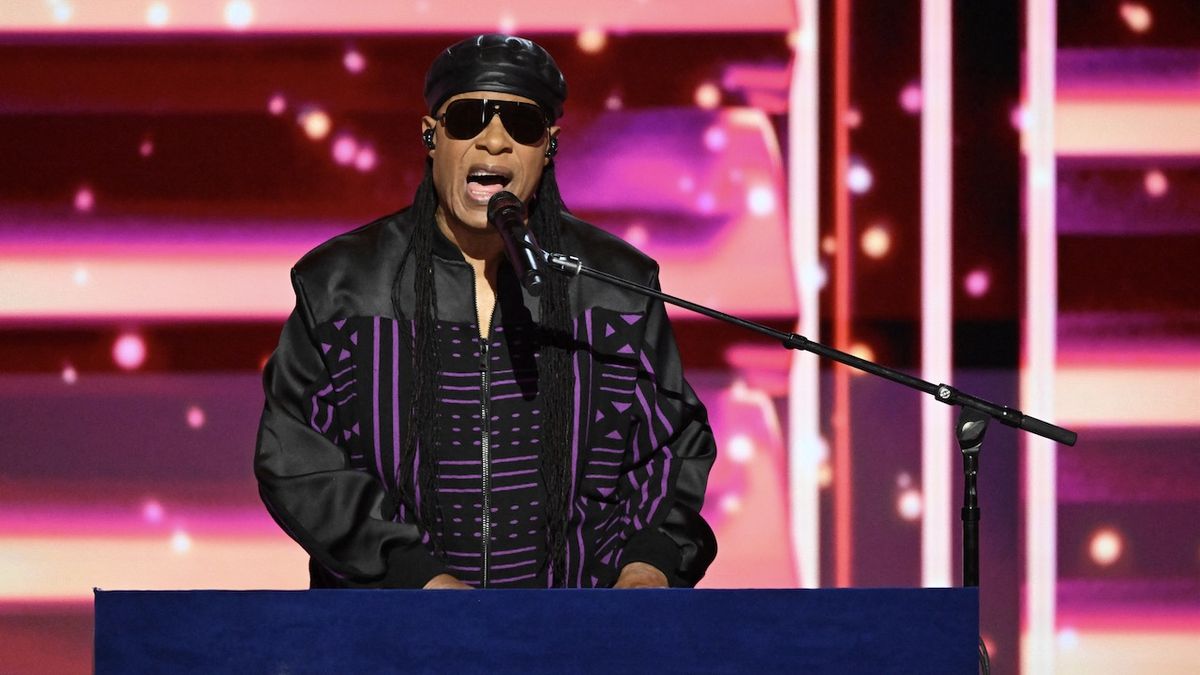
L Paul Mann / Shutterstock.com
Sheryl Crow has spent decades shaping her place as one of the most respected singer-songwriters in American music. Raised in Kennett, Missouri, Crow grew up in a musical household that nurtured her talents from an early age. After earning a degree in music education at the University of Missouri, she taught elementary school music before breaking into the music industry as a backing vocalist. Her earliest major break came when she landed a gig touring with Michael Jackson on his Bad tour in 1987–1989, an opportunity that introduced her voice to massive global audiences and set the stage for her own career. These early years in Los Angeles were formative, as she worked on commercial jingles and session recordings, steadily building her reputation among music insiders before eventually stepping into the spotlight on her own.
Crow’s debut album, Tuesday Night Music Club, released in 1993, launched her into stardom. Fueled by the success of the hit single “All I Wanna Do,” which became a chart-topping phenomenon, the album eventually sold over ten million copies worldwide. The project was an unexpected breakthrough, earning her three Grammy Awards in 1995, including Record of the Year, Best New Artist, and Best Female Pop Vocal Performance. “Strong Enough” and “Leaving Las Vegas” were among the other singles that showcased her distinctive blend of pop, rock, folk, and country, establishing her as a dynamic force in popular music. Rather than being a one-album wonder, Crow followed up her initial success with a long list of critically acclaimed and commercially successful albums that underscored her talent as both a performer and songwriter.
Throughout her career, Sheryl Crow has released eleven studio albums, including Sheryl Crow (1996), The Globe Sessions (1998), C’mon, C’mon (2002), Detours (2008), and Threads (2019), among others. Each album has demonstrated her remarkable ability to evolve artistically while staying true to the heartfelt songwriting that first brought her acclaim. Hit singles such as “If It Makes You Happy,” “Everyday Is a Winding Road,” “My Favorite Mistake,” “Soak Up the Sun,” and “The First Cut Is the Deepest” helped to sustain her commercial relevance over three decades. “Picture,” her 2002 duet with Kid Rock, further expanded her reach into country and crossover audiences. Throughout this extensive catalog, Crow has been lauded for her emotional honesty, sharp lyricism, and genre-defying sound.
Her list of accolades is as long as her list of hits. Sheryl Crow has won nine Grammy Awards out of an impressive thirty-two nominations, underscoring the respect she commands from her peers and the Recording Academy alike. She has also received awards from the American Music Awards and ASCAP, recognizing both her artistry and songwriting skill. In addition to her Grammy victories, she was inducted into the Rock and Roll Hall of Fame in 2023, cementing her place in the history of modern music. Crow’s ability to write songs that resonate deeply with listeners—whether tackling personal heartbreak or broader social issues—has been central to her enduring popularity.
Beyond her music career, Crow has been an active and outspoken advocate on a number of social and environmental issues. She has championed cancer research and awareness following her own battle with breast cancer in 2006, becoming a visible figure in the fight for early detection and treatment. Environmental causes have also been close to her heart, with Crow frequently using her platform to speak out on issues related to global warming and conservation. In 2007, she famously embarked on a cross-country “Stop Global Warming College Tour” alongside environmental activist Laurie David, bringing urgent attention to the climate crisis. Her activism has included campaigns against single-use plastics and support for sustainable farming, reflecting her deep concern for the planet and future generations.
Crow’s life and career are equally defined by her role as a mother. She adopted two sons, and her experience as a parent has often informed her songwriting and public statements. Balancing motherhood with a high-profile music career, she has spoken candidly about the challenges of maintaining privacy while in the public eye. This authenticity, both in her personal life and in her music, has helped her maintain a strong connection with her fans. Despite her fame, Crow has always projected a down-to-earth, relatable persona, making her one of the most approachable and admired artists in the business.
As an artist, Sheryl Crow remains as active as ever. In addition to continuing to perform live and record new music, she has collaborated with a wide range of musicians across genres, including Stevie Nicks, Eric Clapton, Keith Richards, and Chris Stapleton. Her 2019 album Threads featured an extraordinary list of collaborators and was billed as a “final” album, though she has since indicated that she will continue to release singles and work on special projects. Her ability to bridge rock, pop, folk, and country has kept her relevant in an ever-changing industry, and her work continues to influence younger generations of songwriters.
Sheryl Crow’s career is a testament to resilience, artistry, and a deep commitment to authenticity. From her beginnings as a schoolteacher to the heights of music stardom, she has never lost sight of her voice—both as a musician and as an advocate. Whether through her chart-topping singles, her Grammy-winning albums, or her tireless work for social causes, Crow has shaped a legacy that reaches far beyond the music charts. She remains a beloved figure not only for her contributions to music but also for her courage in facing life’s challenges and her dedication to making a difference in the world.
- 100 Miles from Memphis – 100 Miles from Memphis (Standard Edition) – 2010
- Abilene – C’mon, C’mon (Standard Edition) – 2002
- A Change Would Do You Good – Sheryl Crow (Standard Edition) – 1996
- Alarm Clock – Evolution (Standard Edition) – 2024
- All By Myself – Tuesday Night Music Club (Brazilian Bonus Track) – 1993
- All I Wanna Do – Tuesday Night Music Club (Standard Edition) – 1993
- All Through the Night – Home for Christmas (Standard Edition) – 2008
- Alone in the Dark – Be Myself (Standard Edition) – 2017
- Always on Your Side – Wildflower (Standard Edition) – 2005
- Am I Getting Through (Part I & II) – The Globe Sessions (Standard Edition) – 1998
- Anything but Down – The Globe Sessions (Standard Edition) – 1998
- Be Myself – Be Myself (Standard Edition) – 2017
- Beautiful Dream – Detours (Japanese Bonus Track) – 2008
- Best of Times – Feels Like Home (Standard Edition) – 2013
- Beware of Darkness – Threads (Standard Edition) – 2019
- Blue Christmas – Home for Christmas (Standard Edition) – 2008
- Border Lord – Threads (Standard Edition) – 2019
- Broken Record – Evolution (Standard Edition) – 2024
- C’mon, C’mon – C’mon, C’mon (Standard Edition) – 2002
- Callin’ Me When I’m Lonely – Feels Like Home (Standard Edition) – 2013
- Can’t Cry Anymore – Tuesday Night Music Club (Standard Edition) – 1993
- Chances Are – Wildflower (Standard Edition) – 2005
- Coffee Shop – Tuesday Night Music Club (Deluxe Edition Re-release/B-side) – 1993
- Crash and Burn – The Globe Sessions (Standard Edition) – 1998
- Crazy Ain’t Original – Feels Like Home (Standard Edition) – 2013
- Cross Creek Road – Threads (Standard Edition) – 2019
- Detours – Detours (Standard Edition) – 2008
- Detours (Live Acoustic version) – Detours (Japanese Tour Edition) – 2008
- Diamond Ring – Detours (Standard Edition) – 2008
- Diamond Road – C’mon, C’mon (Standard Edition) – 2002
- Digging in the Dirt – Evolution (Deluxe Edition) – 2024
- Disappearing World – Be Myself (Target and Japanese Bonus Track) – 2017
- Do It Again – Evolution (Standard Edition) – 2024
- Doctor My Eyes – Detours (US iTunes Bonus Track) – 2008
- Don’t – Threads (Standard Edition) – 2019
- Don’t Walk Away – Evolution (Standard Edition) – 2024
- Drunk with the Thought of You – Detours (Standard Edition) – 2008
- Drunk with the Thought of You (Live Acoustic version) – Detours (Japanese Tour Edition) – 2008
- D’yer Mak’er – Tuesday Night Music Club (Deluxe Edition Re-release/B-side) – 1993
- Easy – Feels Like Home (Standard Edition) – 2013
- Essential Trip of Hereness – Tuesday Night Music Club (Deluxe Edition Re-release) – 1993
- Evolution – Evolution (Standard Edition) – 2024
- Everything Is Broken – Threads (Standard Edition) – 2019
- Everyday Is a Winding Road – Sheryl Crow (Standard Edition) – 1996
- Eye to Eye – 100 Miles from Memphis (Standard Edition) – 2010
- Flying Blind – Threads (Standard Edition) – 2019
- For the Sake of Love – Threads (Standard Edition) – 2019
- Free Man – Sheryl Crow (UK Bonus Track) – 1996
- Gasoline – Detours (Standard Edition) – 2008
- Give It to Me – Feels Like Home (Standard Edition) – 2013
- Go Tell It on the Mountain – Home for Christmas (Standard Edition) – 2008
- God Bless This Mess – Detours (Standard Edition) – 2008
- Good Is Good – Wildflower (Standard Edition) – 2005
- Grow Up – Be Myself (Standard Edition) – 2017
- Halfway There – Be Myself (Standard Edition) – 2017
- Hard to Make a Stand – Sheryl Crow (Standard Edition) – 1996
- Hard to Make a Stand (Alternate Version) – Sheryl Crow (Digital/Signature Tour Edition/Special Edition) – 1996
- Heartbeat Away – Be Myself (Standard Edition) – 2017
- Hello My Friend, Hello – Home for Christmas (2008 and 2011 editions) – 2008
- Here Comes the Sun – Detours (UK/US iTunes Bonus Track) – 2008
- Hole in My Pocket – C’mon, C’mon (Standard Edition) – 2002
- Home – Sheryl Crow (Standard Edition) – 1996
- Homecoming Queen – Feels Like Home (Standard Edition) – 2013
- Homesick – Feels Like Home (Standard Edition) – 2013
- I Don’t Wanna Know – Wildflower (Standard Edition) – 2005
- I Know Why – Wildflower (Standard Edition) – 2005
- I Shall Believe – Tuesday Night Music Club (Standard Edition) – 1993
- I Want You – C’mon, C’mon (Japan/UK Bonus Track) – 2002
- I Want You Back – 100 Miles from Memphis (Bonus Track) – 2010
- I’ll Be Home for Christmas – Home for Christmas (Standard Edition) – 2008
- I’m Gonna Be a Wheel Someday – Tuesday Night Music Club (B-side) – 1993
- If It Makes You Happy – Sheryl Crow (Standard Edition) – 1996
- It Don’t Hurt – The Globe Sessions (Standard Edition) – 1998
- It’s Only Love – C’mon, C’mon (Standard Edition) – 2002
- It’s So Easy – C’mon, C’mon (Standard Edition) – 2002
- Killer Life – Tuesday Night Music Club (Deluxe Edition Re-release) – 1993
- Leaving Las Vegas – Tuesday Night Music Club (Standard Edition) – 1993
- Letter to God – Wildflower (Standard Edition) – 2005
- Letter to God (Acoustic Version) – Wildflower (Japanese Bonus Track) – 2005
- Lifetimes – Wildflower (Standard Edition) – 2005
- Live It Up – Wildflower (Standard Edition) – 2005
- Live Wire – Threads (Standard Edition) – 2019
- Lonely Alone – Threads (Standard Edition) – 2019
- Long Road Home – 100 Miles from Memphis (Standard Edition) – 2010
- Long Road Home (Acoustic version) – 100 Miles from Memphis (iTunes Bonus Track) – 2010
- Long Road Home – Home for Christmas (2011 edition only) – 2011
- Long Way Back – Be Myself (Standard Edition) – 2017
- Long Way Back (Acoustic version) – Be Myself (Target and Japanese Bonus Track) – 2017
- Love Is All There Is – Detours (Standard Edition) – 2008
- Love Is Free – Detours (Standard Edition) – 2008
- Love Is Free (Live Acoustic version) – Detours (Japanese Tour Edition) – 2008
- Love Is a Good Thing – Sheryl Crow (Standard Edition) – 1996
- Love Life – Evolution (Standard Edition) – 2024
- Love Will Save the Day – Be Myself (Standard Edition) – 2017
- Lucky Kid – C’mon, C’mon (Standard Edition) – 2002
- Lullaby for Wyatt – Detours (Standard Edition) – 2008
- Make It Go Away (Radiation Song) – Detours (Standard Edition) – 2008
- Maybe Angels – Sheryl Crow (Standard Edition) – 1996
- Maybe That’s Something – The Globe Sessions (Standard Edition) – 1998
- Members Only – The Globe Sessions (Standard Edition) – 1998
- Merry Christmas Baby – Home for Christmas (Standard Edition) – 2008
- Missing – C’mon, C’mon (Japan/UK/Brazil/Australia/Germany Bonus Track) – 2002
- Mississippi – The Globe Sessions (Standard Edition) – 1998
- Motivation – Detours (Standard Edition) – 2008
- My Favorite Mistake – The Globe Sessions (Standard Edition) – 1998
- Nobody’s Business – Feels Like Home (Standard Edition) – 2013
- Nobody’s Perfect – Threads (Standard Edition) – 2019
- No One Said It Would Be Easy – Tuesday Night Music Club (Standard Edition) – 1993
- Now That You’re Gone – Detours (Standard Edition) – 2008
- O Holy Night – Home for Christmas (Standard Edition) – 2008
- Oh Marie – Sheryl Crow (Standard Edition) – 1996
- On the Outside – Tuesday Night Music Club (Deluxe Edition Re-release/B-side) – 1993
- Ordinary Morning – Sheryl Crow (Standard Edition) – 1996
- Our Love Is Fading – 100 Miles from Memphis (Standard Edition) – 2010
- Out of Our Heads – Detours (Standard Edition) – 2008
- Over You – C’mon, C’mon (Standard Edition) – 2002
- Peace Be Upon Us – Detours (Standard Edition) – 2008
- Peaceful Feeling – 100 Miles from Memphis (Standard Edition) – 2010
- Perfect Lie – Wildflower (Standard Edition) – 2005
- Prove You Wrong – Threads (Standard Edition) – 2019
- Reach Around Jerk – Tuesday Night Music Club (UK Bonus Disc/B-side) – 1993
- Redemption Day – Sheryl Crow (Standard Edition) – 1996
- Redemption Day – Threads (Standard Edition) – 2019
- Rest of Me – Be Myself (Standard Edition) – 2017
- Resuscitation – The Globe Sessions (UK Extra Track) – 1998
- Rise Up – Detours (UK/Japanese/Japanese Tour Edition Bonus Track) – 2008
- Riverwide – The Globe Sessions (Standard Edition) – 1998
- Roller Skate – Be Myself (Standard Edition) – 2017
- Roses and Moonlight – 100 Miles from Memphis (Standard Edition) – 2010
- Run Baby Run – Tuesday Night Music Club (Standard Edition) – 1993
- Sad Sad World – Sheryl Crow (Digital/Signature Tour Edition/Special Edition) – 1996
- Safe and Sound – C’mon, C’mon (Standard Edition) – 2002
- Say What You Want – 100 Miles from Memphis (Standard Edition) – 2010
- Say What You Want (Acoustic version) – 100 Miles from Memphis (Barnes & Noble Bonus Track) – 2010
- Shine over Babylon – Detours (Standard Edition) – 2008
- Shine over Babylon (Live Acoustic version) – Detours (Japanese Tour Edition) – 2008
- Shotgun – Feels Like Home (Standard Edition) – 2013
- Sideways – 100 Miles from Memphis (Standard Edition) – 2010
- Sign Your Name – 100 Miles from Memphis (Standard Edition) – 2010
- Soak Up the Sun – C’mon, C’mon (Standard Edition) – 2002
- Solidify – Tuesday Night Music Club (Standard Edition) – 1993
- Stay at Home Mother – Feels Like Home (Standard Edition) – 2013
- Steve McQueen – C’mon, C’mon (Standard Edition) – 2002
- Still the Good Old Days – Threads (Standard Edition) – 2019
- Stop – 100 Miles from Memphis (Standard Edition) – 2010
- Story of Everything – Threads (Standard Edition) – 2019
- Strangers Again – Be Myself (Standard Edition) – 2017
- Strong Enough – Tuesday Night Music Club (Standard Edition) – 1993
- Summer Day – 100 Miles from Memphis (Standard Edition) – 2010
- Summer Day (Acoustic version) – 100 Miles from Memphis (Barnes & Noble Bonus Track) – 2010
- Superstar – Sheryl Crow (Standard Edition) – 1996
- Sweet Child o’ Mine – The Globe Sessions (US Extra Track) – 1999
- Sweet Rosalyn – Sheryl Crow (Standard Edition) – 1996
- Tell Me When It’s Over – Threads (Standard Edition) – 2019
- The Bells of St. Mary’s – Home for Christmas (Standard Edition) – 2008
- The Book – Sheryl Crow (Standard Edition) – 1996
- The Christmas Song – Home for Christmas (Standard Edition) – 2008
- The Difficult Kind – The Globe Sessions (Standard Edition) – 1998
- The First Cut Is the Deepest – 100 Miles from Memphis (QVC UK Bonus Disc) – 2010
- The Na-Na Song – Tuesday Night Music Club (Standard Edition) – 1993
- The World You Make – Be Myself (Target and Japanese Bonus Track) – 2017
- The Worst – Threads (Standard Edition) – 2019
- There Goes the Neighborhood – The Globe Sessions (Standard Edition) – 1998
- There Is a Star That Shines Tonight – Home for Christmas (Standard Edition) – 2008
- This Is You (That Was Then) – Feels Like Home (Deluxe Edition Bonus Track) – 2013
- Volvo Cowgirl 99 – Tuesday Night Music Club (UK Bonus Disc/B-side) – 1993
- Waiting in the Wings – Evolution (Standard Edition) – 2024
- Waterproof Mascara – Feels Like Home (Standard Edition) – 2013
- We Do What We Can – Tuesday Night Music Club (Standard Edition) – 1993
- We Oughta Be Drinkin’ – Feels Like Home (Standard Edition) – 2013
- Weather Channel – C’mon, C’mon (Standard Edition) – 2002
- What I Can Do for You – Tuesday Night Music Club (Standard Edition) – 1993
- Where? – Evolution (Standard Edition) – 2024
- Where Has All the Love Gone – Wildflower (Standard Edition) – 2005
- Where Has All the Love Gone (Acoustic Version) – Wildflower (Australian/European/Digital Bonus Track) – 2005
- White Christmas – Home for Christmas (Standard Edition) – 2008
- Wildflower – Wildflower (Standard Edition) – 2005
- Wildflower (Acoustic Version) – Wildflower (Australian/European/Digital Bonus Track) – 2005
- Woo Woo – Be Myself (Standard Edition) – 2017
- Wouldn’t Want to Be Like You – Threads (Standard Edition) – 2019
- You Can’t Change the Weather – Evolution (Standard Edition) – 2024
- You Want More – Tuesday Night Music Club (Deluxe Edition Re-release) – 1993
- You’re an Original – C’mon, C’mon (Standard Edition) – 2002
- You’re Asking the Wrong Person – Feels Like Home (Deluxe Edition Bonus Track) – 2013
- You’re Not the One – C’mon, C’mon (Japan Bonus Track) – 2002
Songs by Album:
Tuesday Night Music Club (1993) – 21 songs:
- All By Myself (Brazilian Bonus Track)
- All I Wanna Do (Standard Edition)
- Can’t Cry Anymore (Standard Edition)
- Coffee Shop (Deluxe Edition Re-release/B-side)
- D’yer Mak’er (Deluxe Edition Re-release/B-side)
- Essential Trip of Hereness (Deluxe Edition Re-release)
- I Shall Believe (Standard Edition)
- I’m Gonna Be a Wheel Someday (B-side)
- Killer Life (Deluxe Edition Re-release)
- Leaving Las Vegas (Standard Edition)
- No One Said It Would Be Easy (Standard Edition)
- On the Outside (Deluxe Edition Re-release/B-side)
- Reach Around Jerk (UK Bonus Disc/B-side)
- Run Baby Run (Standard Edition)
- Solidify (Standard Edition)
- Strong Enough (Standard Edition)
- The Na-Na Song (Standard Edition)
- Volvo Cowgirl 99 (UK Bonus Disc/B-side)
- We Do What We Can (Standard Edition)
- What I Can Do for You (Standard Edition)
- You Want More (Deluxe Edition Re-release)
Sheryl Crow (1996) – 16 songs:
- A Change Would Do You Good (Standard Edition)
- Everyday Is a Winding Road (Standard Edition)
- Free Man (UK Bonus Track)
- Hard to Make a Stand (Standard Edition)
- Hard to Make a Stand (Alternate Version) (Digital/Signature Tour Edition/Special Edition)
- Home (Standard Edition)
- If It Makes You Happy (Standard Edition)
- Love Is a Good Thing (Standard Edition)
- Maybe Angels (Standard Edition)
- Oh Marie (Standard Edition)
- Ordinary Morning (Standard Edition)
- Redemption Day (Standard Edition)
- Sad Sad World (Digital/Signature Tour Edition/Special Edition)
- Superstar (Standard Edition)
- Sweet Rosalyn (Standard Edition)
- The Book (Standard Edition)
The Globe Sessions (1998) – 13 songs:
- Am I Getting Through (Part I & II) (Standard Edition)
- Anything but Down (Standard Edition)
- Crash and Burn (Standard Edition)
- It Don’t Hurt (Standard Edition)
- Maybe That’s Something (Standard Edition)
- Members Only (Standard Edition)
- Mississippi (Standard Edition)
- My Favorite Mistake (Standard Edition)
- Resuscitation (UK Extra Track)
- Riverwide (Standard Edition)
- Sweet Child o’ Mine (US Extra Track)
- The Difficult Kind (Standard Edition)
- There Goes the Neighborhood (Standard Edition)
C’mon, C’mon (2002) – 16 songs:
- Abilene (Standard Edition)
- C’mon, C’mon (Standard Edition)
- Diamond Road (Standard Edition)
- Hole in My Pocket (Standard Edition)
- I Want You (Japan/UK Bonus Track)
- It’s Only Love (Standard Edition)
- It’s So Easy (Standard Edition)
- Lucky Kid (Standard Edition)
- Missing (Japan/UK/Brazil/Australia/Germany Bonus Track)
- Over You (Standard Edition)
- Safe and Sound (Standard Edition)
- Soak Up the Sun (Standard Edition)
- Steve McQueen (Standard Edition)
- Weather Channel (Standard Edition)
- You’re an Original (Standard Edition)
- You’re Not the One (Japan Bonus Track)
Wildflower (2005) – 14 songs:
- Always on Your Side (Standard Edition)
- Chances Are (Standard Edition)
- Good Is Good (Standard Edition)
- I Don’t Wanna Know (Standard Edition)
- I Know Why (Standard Edition)
- Letter to God (Standard Edition)
- Letter to God (Acoustic Version) (Japanese Bonus Track)
- Lifetimes (Standard Edition)
- Live It Up (Standard Edition)
- Perfect Lie (Standard Edition)
- Where Has All the Love Gone (Standard Edition)
- Where Has All the Love Gone (Acoustic Version) (Australian/European/Digital Bonus Track)
- Wildflower (Standard Edition)
- Wildflower (Acoustic Version) (Australian/European/Digital Bonus Track)
Detours (2008) – 22 songs:
- Beautiful Dream (Japanese Bonus Track)
- Detours (Standard Edition)
- Detours (Live Acoustic version) (Japanese Tour Edition)
- Diamond Ring (Standard Edition)
- Doctor My Eyes (US iTunes Bonus Track)
- Drunk with the Thought of You (Standard Edition)
- Drunk with the Thought of You (Live Acoustic version) (Japanese Tour Edition)
- Gasoline (Standard Edition)
- God Bless This Mess (Standard Edition)
- Here Comes the Sun (UK/US iTunes Bonus Track)
- Love Is All There Is (Standard Edition)
- Love Is Free (Standard Edition)
- Love Is Free (Live Acoustic version) (Japanese Tour Edition)
- Lullaby for Wyatt (Standard Edition)
- Make It Go Away (Radiation Song) (Standard Edition)
- Motivation (Standard Edition)
- Now That You’re Gone (Standard Edition)
- Out of Our Heads (Standard Edition)
- Peace Be Upon Us (Standard Edition)
- Rise Up (UK/Japanese/Japanese Tour Edition Bonus Track)
- Shine over Babylon (Standard Edition)
- Shine over Babylon (Live Acoustic version) (Japanese Tour Edition)
Home for Christmas (2008) – 12 songs:
- All Through the Night (Standard Edition)
- Blue Christmas (Standard Edition)
- Go Tell It on the Mountain (Standard Edition)
- Hello My Friend, Hello (2008 and 2011 editions)
- I’ll Be Home for Christmas (Standard Edition)
- Long Road Home (2011 edition only)
- Merry Christmas Baby (Standard Edition)
- O Holy Night (Standard Edition)
- The Bells of St. Mary’s (Standard Edition)
- The Christmas Song (Standard Edition)
- There Is a Star That Shines Tonight (Standard Edition)
- White Christmas (Standard Edition)
100 Miles from Memphis (2010) – 16 songs:
- 100 Miles from Memphis (Standard Edition)
- Eye to Eye (Standard Edition)
- I Want You Back (Bonus Track)
- Long Road Home (Standard Edition)
- Long Road Home (Acoustic version) (iTunes Bonus Track)
- Our Love Is Fading (Standard Edition)
- Peaceful Feeling (Standard Edition)
- Roses and Moonlight (Standard Edition)
- Say What You Want (Standard Edition)
- Say What You Want (Acoustic version) (Barnes & Noble Bonus Track)
- Sideways (Standard Edition)
- Sign Your Name (Standard Edition)
- Stop (Standard Edition)
- Summer Day (Standard Edition)
- Summer Day (Acoustic version) (Barnes & Noble Bonus Track)
- The First Cut Is the Deepest (QVC UK Bonus Disc)
Feels Like Home (2013) – 14 songs:
- Best of Times (Standard Edition)
- Callin’ Me When I’m Lonely (Standard Edition)
- Crazy Ain’t Original (Standard Edition)
- Easy (Standard Edition)
- Give It to Me (Standard Edition)
- Homecoming Queen (Standard Edition)
- Homesick (Standard Edition)
- Nobody’s Business (Standard Edition)
- Shotgun (Standard Edition)
- Stay at Home Mother (Standard Edition)
- This Is You (That Was Then) (Deluxe Edition Bonus Track)
- Waterproof Mascara (Standard Edition)
- We Oughta Be Drinkin’ (Standard Edition)
- You’re Asking the Wrong Person (Deluxe Edition Bonus Track)
Be Myself (2017) – 14 songs:
- Alone in the Dark (Standard Edition)
- Be Myself (Standard Edition)
- Disappearing World (Target and Japanese Bonus Track)
- Grow Up (Standard Edition)
- Halfway There (Standard Edition)
- Heartbeat Away (Standard Edition)
- Long Way Back (Standard Edition)
- Long Way Back (Acoustic version) (Target and Japanese Bonus Track)
- Love Will Save the Day (Standard Edition)
- Rest of Me (Standard Edition)
- Roller Skate (Standard Edition)
- Strangers Again (Standard Edition)
- The World You Make (Target and Japanese Bonus Track)
- Woo Woo (Standard Edition)
Threads (2019) – 17 songs:
- Beware of Darkness (Standard Edition)
- Border Lord (Standard Edition)
- Cross Creek Road (Standard Edition)
- Don’t (Standard Edition)
- Everything Is Broken (Standard Edition)
- Flying Blind (Standard Edition)
- For the Sake of Love (Standard Edition)
- Live Wire (Standard Edition)
- Lonely Alone (Standard Edition)
- Nobody’s Perfect (Standard Edition)
- Prove You Wrong (Standard Edition)
- Redemption Day (Standard Edition)
- Still the Good Old Days (Standard Edition)
- Story of Everything (Standard Edition)
- Tell Me When It’s Over (Standard Edition)
- The Worst (Standard Edition)
- Wouldn’t Want to Be Like You (Standard Edition)
Evolution (2024) – 10 songs:
- Alarm Clock (Standard Edition)
- Broken Record (Standard Edition)
- Digging in the Dirt (Deluxe Edition)
- Do It Again (Standard Edition)
- Don’t Walk Away (Standard Edition)
- Evolution (Standard Edition)
- Love Life (Standard Edition)
- Waiting in the Wings (Standard Edition)
- Where? (Standard Edition)
- You Can’t Change the Weather (Standard Edition)
Total songs: 185
Check out our fantastic and entertaining Sheryl Crow articles, detailing in-depth the band’s albums, songs, band members, and more…all on ClassicRockHistory.com
Read More: Classic Rock Bands List And Directory
Complete List Of Sheryl Crow Songs From A to Z article published on ClassicRockHistory.com© 2025




























